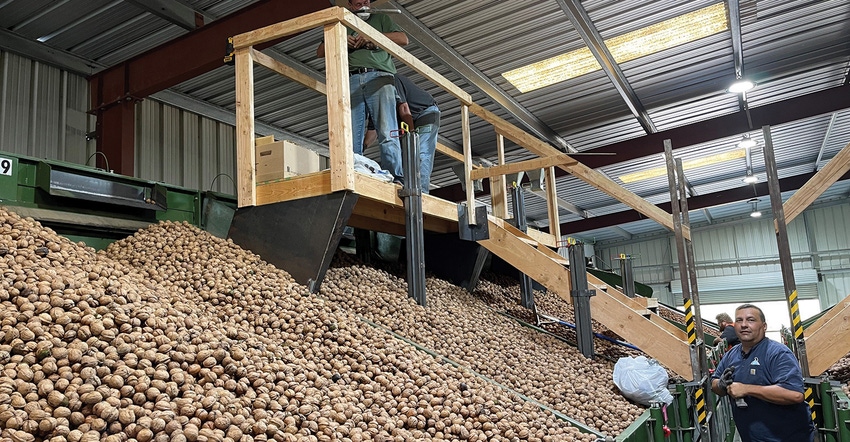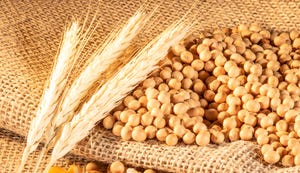
There’s good news and not-so-good news in the World of Walnuts this season.
USDA/NASS served as messenger to bring the not-so-good stuff with a pre-harvest forecast that came in at 15% less than the 2020 record production. The Objective Report predicted 670,000 tons and based the lower numbers on widespread freezing temperatures late last fall that resulted in frost damage that delayed leaf-out and reduced nut set.
The state’s drought conditions didn’t help much either as survey data showed per tree average nut set at 992, down a bunch (17%) from 2020’s average of 1,197, although percent of in-shell sound kernels was reported at 99.5% statewide. In-shell weight average was 22.2 grams, consistent with where that average has been over the last decade. Coastal-area counties including Napa, Sonoma, Santa Clara, San Luis Obispo, San Benito, Contra Costa, Lake, and Monterey, reported a high in-shell weight average of 26.9 grams.
Also under the banner of good news was the fact that forecast bearing acreage increased a tad, from 380,000 to 385,000 acres. This year’s sample survey looked at over 1,400 trees from 700 different orchards. Both bearing acreage and bearing trees per acre increased in 2021, representing another year in a chart that continues to move upward.
The positive indicators were well received by the Western Agricultural Processors Association and associated USDA ARS researchers from California and New Mexico who have been forward-thinking in a new walnut dryer research project intended to reduce drying times.
“The reduction in drying times will conserve fuel and increase turn-around times at walnut hullers,” reported WAPA’s Tree Nut Times. “The research is investigating new grain drying equipment that has proven successful in grain-drying applications and is being looked at here (Summerfield Farms in Hanford) to see if it can be applied to drying walnuts.
“Early indications seem to show that to be working, but data analysis and further testing will be conducted,” said WAPA President and CEO Roger Isom, taking a break from the hubbub of harvest to speak with Western Farm Press about this year’s crop and the promising research.
“Harvest numbers are trending down, some a bit lower, some a bit higher, but nothing major, probably somewhere in the ballpark of 10-20% down or in that ballpark,” he said. “Across the board, this summer, weather and water had an impact on all nut crops, but it’s always a matter of supply and demand and with supply lower, prices come up across the board and growers are happy about that.”
‘This has promise’
Isom says he’s enthused about the walnut drying efforts. “This has promise,” he said while admitting researchers couldn’t get in enough research repetitions this year. The process is based on cotton-drying that took an average of less than one bale per hour up to three or four bales per hour. “We’re looking at either reducing nut drying time or the amount of heat we use to dry.
“Back in the days when we used trailers, you dried from the bottom up, so walnuts on the bottom got dried quickly while the ones on top took forever. You cooked the ones on the bottom to get the top ones to the moisture needed. We’re looking at more even distribution of heat throughout the bin or a reduction in drying time.”
No official pronouncement is expected until further testing is done next year with different varieties, but Isom says researchers are reporting unofficially that new drying methods “definitely make a difference with a minimal investment in a tower to bring heat in at a different level.”
About the Author(s)
You May Also Like




